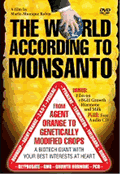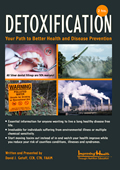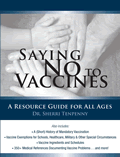US MEASLES CASES RESULT OF UNBRIDLED IMMIGRATION
By
NWV News writer Jim Kouri
Posted 1:00 AM Eastern
April 26, 2009
© NewsWithViews.com
The once eliminated disease of measles is making a comeback in the United States thanks to our lax immigration policy, according to the latest statistics from the Centers for Disease Control and the American Red Cross.
Recent measles cases in four states - California, Pennsylvania, Maryland and Iowa - highlight the growing number of unvaccinated adults and children living in the United States as well as the need to control the global spread of the disease.
While this highly-contagious virus was eliminated from the United States in 2002, imported cases trigger outbreaks among unvaccinated persons in the United States, according to the American Red Cross.
Last year, the number of reported measles cases in the United States more than doubled (63, on average, to 140 total in 2008). With the decreased fear of measles, many American parents chose not to vaccinate their children, and the US health authorities overlooked the fact that measles is still common in many countries and kills an estimated 540 children globally each day.
The measles virus can be imported into the U.S. by foreign visitors or returning travelers who are not fully protected against the disease. According to the Centers for Disease Control, close to 90% of the measles cases reported this year in the U.S. were either acquired abroad or linked to imported cases. Many were related to cases imported from Europe. Once in the U.S., the virus spreads through a variety of settings, including homes, childcare centers, schools, hospitals, emergency rooms, and doctors' offices.
"With growing number of people entering the United States illegally, the threat of them bringing with them diseases once thought to be eliminated is increasing the vulnerability of our citizens," according to political strategist Mike Baker.
"We are witnessing increases in cases of tuberculosis, polio and other serious or deadly diseases. And let's not forget our vulnerability to the so-called 'bird flu,'" he added.
Despite the fact that a safe and effective measles vaccine costs less than $1, parents in many developing countries do not have access to immunization services that would protect their children. Factors such as poverty, poor health systems and a lack of information make it difficult for families to secure preventative medical care, according to officials with the American Red Cross.
"As long as measles remains an issue for one nation, it remains a threat to all," said Athalia Christie, senior technical advisor with the American Red Cross.
While the Measles Initiative -- a partnership led by the American Red Cross, Centers for Disease Control and Prevention, United Nations Foundation, UNICEF, and the World Health Organization -- is working to address this problem, there is no attempt by the US government to prevent these diseases from entering the country.
Measles causes ear infections in nearly one out of every 10 children who get it. As many as one out of 20 children with measles gets pneumonia, and about one child in every 1,000 who get measles will develop encephalitis. (This is an inflammation of the brain that can lead to convulsions, and can leave your child deaf or mentally retarded.) For every 1,000 children who get measles, one or two will die from it. Measles can also make a pregnant woman have a miscarriage, give birth prematurely, or have a low-birth-weight baby.
In Third-World countries, where malnutrition and vitamin A deficiency are prevalent, measles has been known to kill as many as one out of four people. It is the leading cause of blindness among African children. Measles kills almost 1 million children in the world each year.
The disease is highly contagious, and can be transmitted from 4 days prior to the onset of the rash to 4 days after the onset. If one person has it, 90% of their susceptible close contacts will also become infected with the measles virus.
The virus resides in the mucus in the nose and throat of the infected person. When that person sneezes or coughs, droplets spray into the air. The infected mucus can land in other people’s noses or throats when they breathe or put their fingers in their mouth or nose after handling an infected surface. The virus remains active and contagious on infected surfaces for up to 2 hours. Measles spreads so easily that anyone who is not immunized will probably get it, eventually.
CDC and state health officials are concerned about an increase this year in the number of measles cases and outbreaks (three or more linked cases) in the U.S. Measles is a highly contagious disease spread through coughing or sneezing. Symptoms can include rash, high fever, coughing, and runny nose. The disease can also cause more serious problems, such as ear infections, pneumonia, encephalitis (inflammation of the brain)—even death.
From January through July 2008, CDC received reports of 131 measles cases from 15 states and the District of Columbia—the highest year-to-date number since 1996. More than 90% of those infected had not been vaccinated, or their vaccination status was unknown. Many of these individuals were children whose parents chose not to have them vaccinated. Fifteen of the patients, including four infants, were hospitalized.
These cases remind us that it is very important to vaccinate children and adults to protect them against measles. Even though the ongoing transmission of endemic (native) measles was declared eliminated in the U.S. in 2000, the disease is still common in many other countries. Worldwide, 20 million cases of measles still occur each year, and the disease is a significant cause of vaccine-preventable deaths among children. In 2006, about 242,000 children died from the disease.
|
Subscribe to the NewsWithViews Daily News Alerts! |
No matter where or why the next outbreak of measles occurs, the best way to protect your children, yourself, and others from the disease is to keep up to date on vaccinations.
The measles vaccine is administered as MMR, a combination vaccine that provides protection against measles, mumps, and rubella. The MMR vaccine is strongly endorsed by medical and public health experts as safe and effective. All children should receive two doses of MMR vaccine. The first dose is recommended at 12–15 months of age and the second dose at 4–6 years of age.
Related Article:













